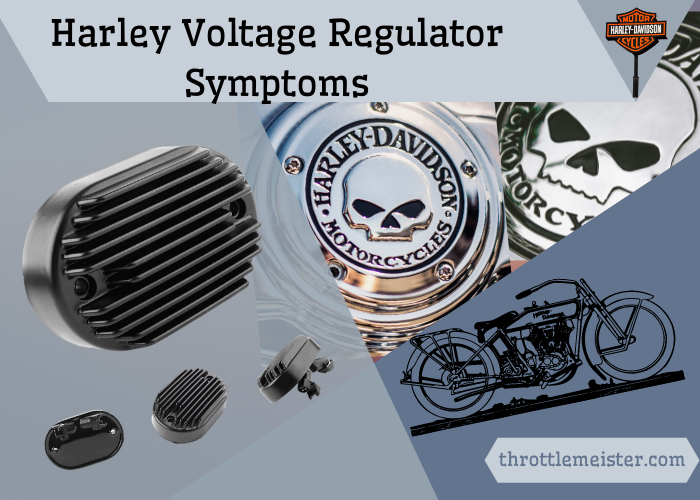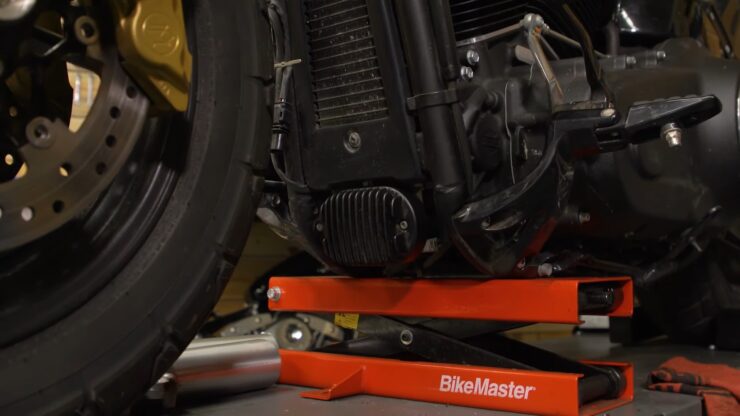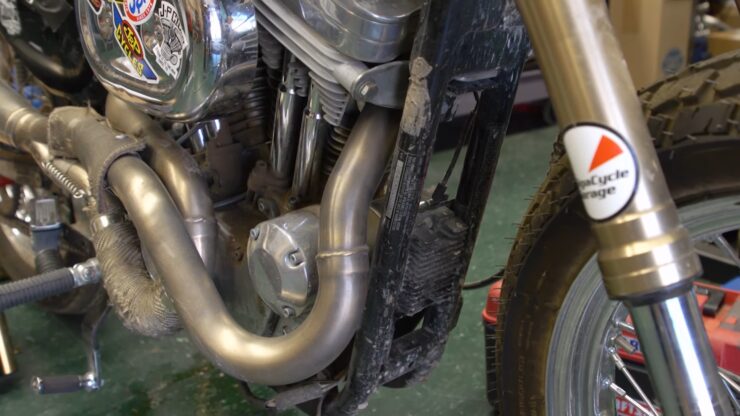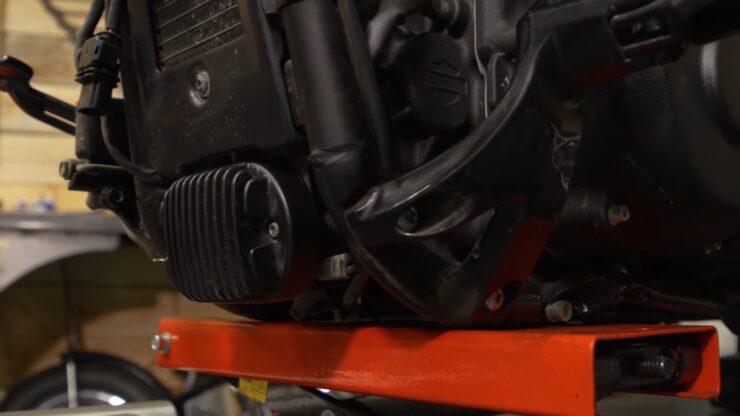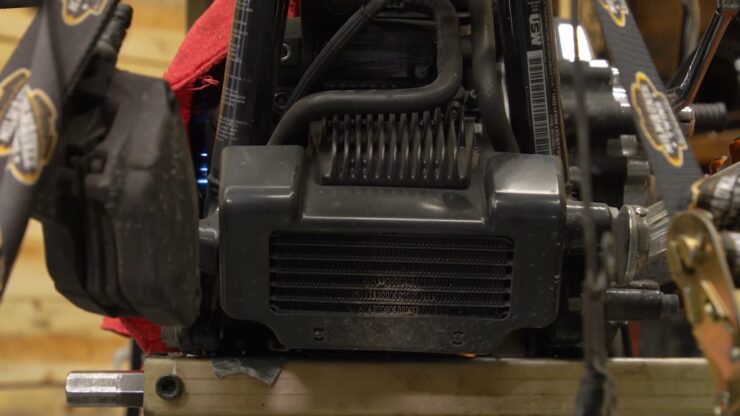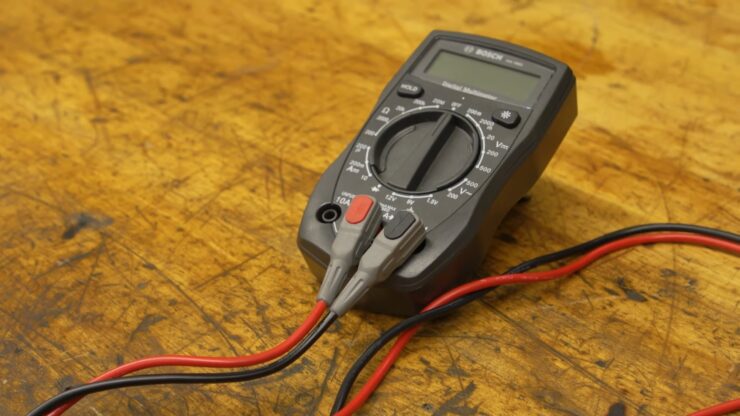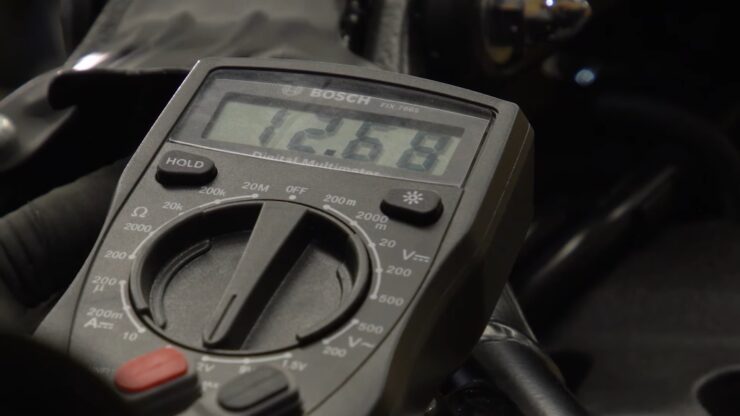If you are a Harley Davison motorbike enthusiast, you will have gotten used to Harley Voltage Regulator Symptoms. You will also know the importance of voltage regulators and how devastating a bad voltage regulator could be.
Voltage regulators are essential to an engine, and you should get acquainted with its usual symptoms to guarantee smooth engine running. This article highlights and provides answers to lots of questions you may have about Harley voltage regulators.
There are some useful tips about voltage regulators and to fix bad or faulty regulators. Read on to enhance your knowledge about Harvey voltage regulator symptoms and other pertinent questions.
Contents
- 1 What is a Harley voltage regulator?
- 2 What exactly does a voltage regulator do?
- 3 Bad Harley Voltage Regulator Symptoms
- 4 01. Power Failure
- 5 02. Gauge Flickering
- 6 03. Malfunction in engine light
- 7 04. Error reading the cluster
- 8 05. Brown headlights
- 9 06. Gas fusing out of battery
- 10 07. Faulty voltmeter reading-
- 11 How to Test Bad Voltage Regulator Systems
- 12 How to Check Bad Rectifier Failure
- 13 Why Bad Voltage Regulator Occurs?
- 14 How to fix a bad voltage regulator
- 15 FAQ’s Harley Bad Voltage Regulator
- 16 What is the importance of voltage regulators on Harley Davidson?
- 17 What will happen if the voltage regulator fails?
- 18 Can my battery get drained due to faulty voltage regulator?
- 19 Symptoms of a Bad Voltage Regulator?
- 20 What is the effect of a bad voltage regulator on the alternator?
- 21 How do I know if my voltage regulator is working?
- 22 Verdict
What is a Harley voltage regulator?
In general terms, Harley Voltage Regulator is the electronic feature in a vehicle called the instrument cluster voltage regulator, whether automobiles, bikes, or motorcycles.
The voltage regulator Harley regulates the voltage through Harley Davidson’s instrument gauges, the speed meter, and the cluster, as its name implies. The driver can track the bike’s speed and motor life with the aid of the voltage controller’s visual display.
However, as a rider, you won’t access essential data on the motorcycle status and running conditions when the Harley voltage adjuster is defective or bad.
What exactly does a voltage regulator do?
One of the most common electronic components is the voltage regulators since power generates raw electricity that would destroy one of these components. Voltage regulators, depending on their application, have different essential roles.
Here are two significant features:
- To monitor or change the stator voltage at a relatively flat voltage.
- Enable the rectifier to work correctly.
Bad Harley Voltage Regulator Symptoms
01. Power Failure
One of the simplest ways to notice a bad Harley voltage regulator is when the cluster cannot power. Cluster is an essential component in the Harley voltage regulator.
When power is distributed to the cluster and does not function, it explains that the voltage regulator needs expert attention.
Sometimes, despite these cluster symptoms, Harley motorcycles might start, but the speedometer has a high tendency to develop a fault along the trip.
02. Gauge Flickering
If you notice your Harvey voltage regulator shines dimly or indicator flickering at the interval, this is a symptom of a bad voltage regulator.
Situations like this do not require much trouble, kindly contact your technician to get this fixed.
03. Malfunction in engine light
Another simple method to noticing a faulty Harley voltage regulator is when the voltage regulator flicks off.
The voltage regulator helps to power the motorcycle; when you notice the abnormality in power, then there is a fault in its condition. In a condition where the lights are low, it may not be easy to read the gauge indicator.
04. Error reading the cluster
When there is inaccuracy or difficulty in reading the Harvey voltage regulator, be assured there is a fault with the regulator.
When the voltage regulator is unable to read, it is difficult to know when the engine life service is due; there are usually irregularities in the numbers displayed.
05. Brown headlights
In an inactive state, there is a high voltage in the battery, which causes the headlamp, side lamp, or tail lamp to burn out. This burn out could also be a result of high voltage in the lamp.
06. Gas fusing out of battery
As faulty regulators can’t control voltage, this causes the battery to overcharge, thereby releasing gas to the atmosphere. Note that the gases released by this battery are flammable.
07. Faulty voltmeter reading-
When you notice unusual reading in your voltmeter, it signifies a faulty voltage regulator. Faulty voltmeter reading is also a result of excess heat in the circuit.
How to Test Bad Voltage Regulator Systems
It is possible to test your voltage regulator for a fault if you notice any of the voltage symptoms mentioned above. Voltage would only be able to transport from the stator to the battery if the regulator is properly working.
A voltage leakage in the battery would lead to voltage leakage in the regulator, which is easier to test, as explained below:
- A multimeter clip the test light to the battery’s negative(-) terminal while unplugging the regulator to ascertain accurate voltage reading.
- Then use the test light to touch each of the regulator terminals once at a time. If you notice the test light illuminating, the regulator is faulty.
- Should you notice any issue, ensure to test the charging system.
How to Check Bad Rectifier Failure
In most bikes, the regulator and rectifier are housed in the same unit, but they are mounted separately by other older versions. This is what you would do to scan for malfunction on your rectifier:
- Disconnect the bike wire and switch the multimeter to diode function
- Insert the positive lead in the positive diode
- Also, connect the negative lead to stator input.
- After the process above, connect the positive diode to the negative lead, then the positive lead to stator input. You will notice meter reading at this stage, but it is irrelevant.
- Do a reverse of the instruction above by connecting negative diode to positive lead and negative lead to stator input.
- Make the bike run between 13.5-14.5 volts, then connect the meter leads to the battery. The battery overcharges if the reading is higher, and the regulator rectifier needs replacement.
Why Bad Voltage Regulator Occurs?
- A problem with the alternator, old battery, poor current management
It may be attributed to various reasons, including failing to switch off the lamps, a fault with the alternator, or just a fix for an aging battery.
It may also be attributed to incorrectly regulated electricity triggered by the weak voltage controller.
- Damaged Materials Internal
Aging will affect the voltage regulator. Older versions cannot be as healthy as modern ones. The longer the regulator is used, the more likely the problem is to be solved over time.
Moisture also leads to destroying electrical components in addition to aging. This intense heat will harm the regulator if your bike has any mechanical malfunction and is excessively hot.
- Blown rectifier
A blown rectifier is one of the major causes of bad voltage regulators. Thorough checks and regular maintenance need to be in place to detect this issue early.
- Damaged Internal Components
Aging will affect the voltage regulator. Older versions cannot be as large as modern ones. The longer the regulator is used, the more likely the problem is to be solved over time.
Moisture also leads to destroying electrical components in addition to aging. This intense heat will even harm your bike’s regulator, making it excessively hot.
- Too heavy sound
Motorcycles vibrate, and you don’t have to be nervous about that. However, the regulator’s effect depends on whether the bike vibrates violently due to some technological problem. It loosens electrical joints, and improperly run joints cause the most harm.
- Misfiring, Backfiring, and Shots
Motor misfires, fires, and other electrical systems often damage and even hurt the tension regulator. Where the issue I mentioned above occurs, the voltage regulator will be disturbed.
As a result, the regulator cannot tighten down the charging circuit if the voltage rises past 14,5V. This overloads the battery and causes many other problems in electronics. A poor stress controller also seriously affects the circuits.
How to fix a bad voltage regulator
The following are useful steps to fix a bad voltage regulator:
- First, ascertain the central issue before proffering a solution.
- Ensure to clean and tighten the battery
- Always charge the rectifier.
- You can also use a multimeter to check for the problem.
- In case there is a warranty issue, return to the manufacturer.
FAQ’s Harley Bad Voltage Regulator
What is the importance of voltage regulators on Harley Davidson?
When the battery voltage goes too high, the regulator covers the battery voltage as it cuts off power to the ground and bleeds as heat. This is how the heat fins on the control box are designed to dispel heat. It’s going to kill the battery if the regulator didn’t control the voltage.
What will happen if the voltage regulator fails?
The voltage controller guarantees that the correct amount of power is retained in compliance with specific areas of your motorbike. If the tension controller is broken, the system components will function only irregularly or not.
Can my battery get drained due to faulty voltage regulator?
A leaky diode will also drain the current from the battery through the alternator if the voltage regulator is faulty. A defective voltage regulator can also cause problems in charging.
Symptoms of a Bad Voltage Regulator?
Weak Harley voltage regulator symptoms may include:
- Input high voltage.
- The high output voltage, rarely.
- No output strain.
- Dark or flashing colors.
- Erratic engine working
- Frequent water is also applied to the battery.
You should consult a professional technician if you notice any of these symptoms from your voltage regulator.
What is the effect of a bad voltage regulator on the alternator?
A faulty voltage regulator could stop the charging of the alternator or a no-charge situation.
How do I know if my voltage regulator is working?
The following are steps to detect if a voltage regulator is working:
- Buy a multimeter. This will help read the voltage from your battery and indicates whether your controller is functioning correctly.
- Place the voltage multimeter. Switch the ohm or multimeter dial or press a button and set the voltage. The voltage setting looks like an oscillation or is a V with above its lines.
- Read the manual if you are unsure which setting is the voltage. Never read the voltage in the place Ohm or Ampere, as your device may be impaired.
- Enter the clamps in the battery terminal on your multimeter. Your battery is next to your motor, which feels like a plastic battery. There are two nodes next to them with + and – symbols. A black and red rope should be tied to the cords’ ends with the clamp or lead. Add the black battery clamp to the negative (-), while the red one is connected to the positive (+) terminal.
- You might even have a plastic cover on the terminals of your charger. Head up the plastic cap to see both positive and negative knots.
- Test the computer numerals. If the battery functions right, you can have a little over 12 volts with the bike off. If the multimeter is less than 12 volts, your battery is usually small and needs to be replaced quickly.
- If the multimeter reads nothing, the batteries in the meter will be dead. It can also indicate the meter is not correctly plugged into your motorbikes battery.
- Ensure you park your bike appropriately so that during the testing of the controller, you cannot shift forward or backward. As a safety precaution, take a parking brake. Switch the ignition key to start the engine or click on the ignition button. Look at your multimeter; see your multimeter. The readings should have risen to about 13.8 Volt when the bike is idle.
- This means your alternator is charging your battery correctly if your multimeter reads 13.8.
- Rev the motor of the engine. You will need someone else to re-engine the multimeter so you can look at it.
- Check the multimeter performance. The control system can restrict the battery output to around 14.5. It usually means that you have a defective regulator when the voltage reads above 14.5. You have a small battery and would have to substitute it shortly if the voltage reads less than 13.8 volts.
Verdict
When you have a motorcycle with a defective voltage regulator, it can be very disappointing and stressful.
On the other hand, all of these Harley voltage regulation symptoms while riding the motorcycle should also be tested. Take nothing as a matter of course. It is also essential to regularly service the engines.
The buying or driving of these devices is also not enough; they must be swiftly and correctly taken care of. A proper diagnosis is essential to see whether your tension regulator needs to be replaced or if you need to repair electrical problems on your bike.
Take note of the Harley voltage regulator symptoms identified with their solutions in this article. Feel free to share your comment in the comment section below.

